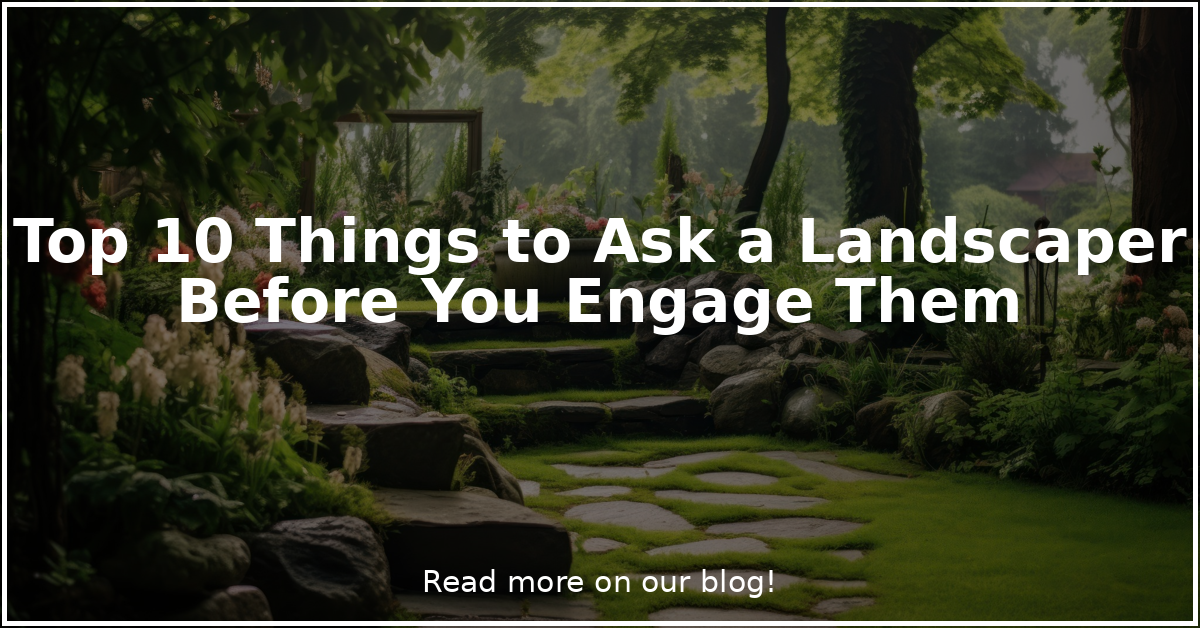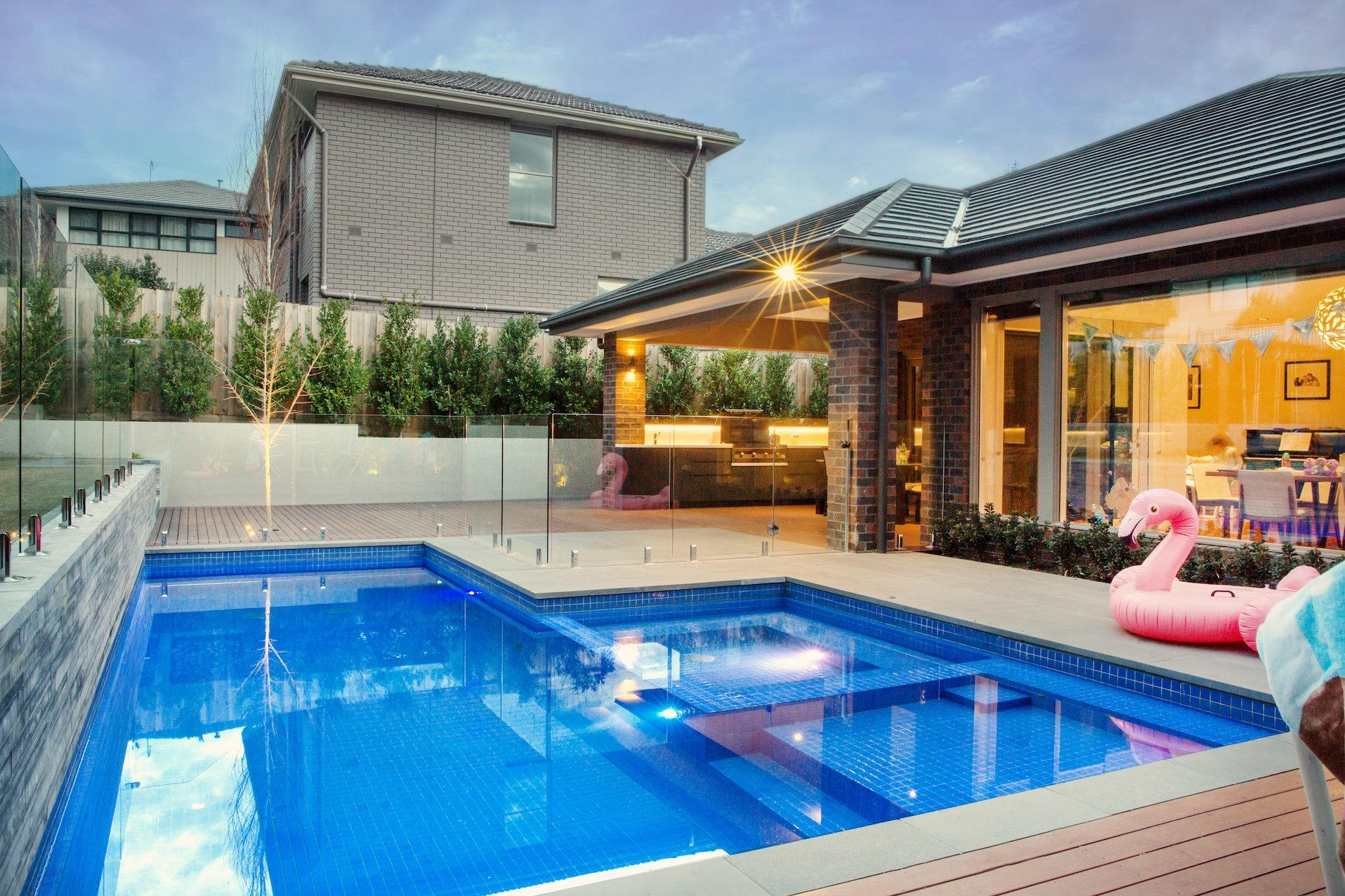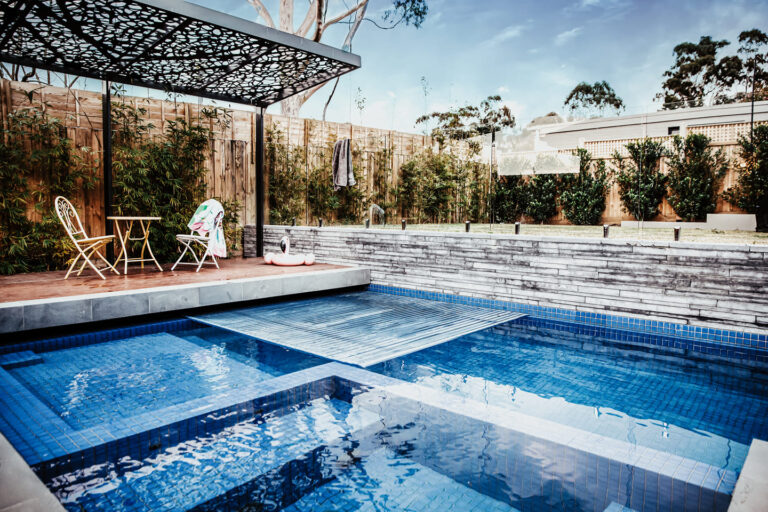Top 10 things you should know when engaging a landscape designer or landscape architect
July 17th, 2017
10 min read
By Andrew Whyte

Are you thinking about engaging a landscape designer or landscape architect for a new garden project somewhere in Melbourne? Is this the first time you've ever dealt with a landscape architect or designer? Would you like to know the Top 10 most important thing you should absolutely know before you engage a landscape designer or landscape architect?
As landscape designers (and landscapers) ourselves, we've had a lot of experience with clients over the past 30 years. And unfortunately some of that experience has involved rescuing clients from less than ideal situations where they clearly didn't ask the right questions before they engaged someone to work on their new garden project.
So this article essentially summaries our 30 years of experience into the Top 10 questions you absolutely must ask yourself or your landscape designer or landscape architect before you engage them.
If you get the right answers, then your new garden project should go well. If you don't get the right answers, perhaps take a step back and reconsider your next move before proceeding.
1. Always engage a GARDEN designer who has experience in construction
When you engage someone to design your garden who has no experience in the actual construction of gardens and works solely on designing "in theory", this can lead to the biggest mistakes of all.
Often these mistakes become compounded when the designer also has no practical real world experience of the rules and regulations surrounding the construction of elements in a garden such as pools, decks, pergolas, outdoor kitchens, etc
For example if your designer designs a paved area using pavers that are 500x500m but makes the total area to be paved some odd amount like 2650 x 7780mm, then you are clearly going to end up with some pavers being sliced down to a thin sliver along the sides of the paved areA, somewhat ruining the aesthetics of it.
Or should your designer allow for a big beautiful tree to be planted right next to the pool fence, except when you discover that means the pool fence will not be approved by council because a child could use the branches of the tree to climb into the pool.
A real life example we know of was when a landscape designer included a deck that was built over an easement they knew nothing about. When the council came to inspect the deck they would not approve it and in fact ordered it to be torn down.
These are just some of the risks you take when you engage a landscape designer or landscape architect who has little or no 'hands on' experience of working with the actual construction of gardens.
2. Always ask to see a portfolio of their past work
Another absolute must is to never engage a landscape designer or landscape architect without having a good look at their past portfolio of work.
If they can't show you previous projects that are of the type you are planning, be wary. It is possible they are either inexperienced and relatively new to the industry or they have never designed projects on the scale of what you have in mind.
And when looking through their portfolio never be afraid to ask probing questions like "So exactly what was your role in this garden? Did you get involved in supervising the construction as well as doing the design for it or did you just hand it over to the landscaper to build it?"
You can even ask if the landscaper built it as per their design, because sometimes a landscaper may enhance a garden's poor design and actually be responsible for some of its major features.
3. Beware the hidden quicksand of building codes, regulations, permits etc
This can be a tricky one to reveal before the project is actually started but it's vitally important to ensure you are not engaging someone who is unfamiliar with building codes, regulations etc.
A landscape designer or landscape architect who is not familiar with the myriad of codes that apply to many of the elements common in a garden today can lead you into an area in which you might sink very quickly. They may design you a beautiful garden but include all manner of elements that simply don't meet various codes. For example, they design a lovely water feature with a pond that just happens to be 350mm deep. (Any body of water deeper than 300mm these days needs a pool fence or other protective barrier around it to prevent children falling into it and drowning.)
Building a pergola next to an easement, might seem to some inexperienced designers to be OK, but it will still need approval from whichever authority's easement it is. This can be because the foundations of the pergola can exert pressure in the ground that can affect the nearby pipes in the easement and potentially cause damage to them.
Always ask a garden designer how familiar they are with building codes, permits, etc before engaging them.
4. Beware designers who can't work with budgets
Believe it or not, this can happen. Some designers don't feel the need to be 'cost accountable' and see the opportunity to design a garden as being an exercise in being allowed to push the limits of their own creativity.
That's OK if you have an unlimited budget and have specifically told your designer to feel free to push the envelope in designing something that completely wows you.
But most clients do have limits. However some garden designers, especially those who have not been involved in the construction of the gardens they design, don't really know how much things cost to build.
Over the years, a number of our clients have come to us with gardens they have had designed by others and asked us to quote them for construction. When we gave them the estimate, it was often twice what they had budgeted for or more.
A designer who cannot give you an estimate of costs ‘as they design’ can lead you to having a fabulous design for your garden that you love, but you simply cannot afford to build it.
5. Avoid designers who lack experience with the materials used for the design
One of the other downsides of engaging a landscape designer or landscape architect who doesn't have practical experience of working with the materials used in constructing gardens, is that they don't know all the quirks involved in different materials.
This can often lead to significant changes having to be made between what was designed in the theoretical world and what needs to be used to actually construct the garden in the real world.
Again we do receive designs from time to time done by others and we have to inform the client that major changes will need to be made to the garden design in order to have it built. Or that additional steps at extra cost will need to be undertaken in order to achieve the desire outcome.
For example a client wants a salt based swimming pool and really wants to have their pool surround paved with gorgeous Gosford stone. The designer designs the garden according to the clients wishes but doesn't know that the salt in the pool will eat away at the soft limestone over time, eventually ruining the paved area. To prevent this, each limestone paver will have to be individually 'dip-sealed' on site and allowed to dry before being laid around the pool. This can add considerable cost and time to the project.
6. Not understanding the difference between a Concept Design & a Master Plan
This is an area that can cause a great deal of confusion in landscaping because different landscape designers and landscape architects can have completely different ideas what these terms mean to them.
By definition a "concept" is defined as, “a general notion or idea”. So a Concept Design should be a "big picture" idea for your garden with all the key elements included but it should not go into too much detail. A "Master Plan" however by definition would be a “detailed plan showing all key elements; materials to be used; all done to scale”.
Where this gets messy is when we get clients who say to us they chose another designer because their design fees were half the price of ours. What they bring to us to quote for construction is what they think is a detailed Master Plan for their garden. But it isn't, it's only a concept design, which is why it was half the price of ours to design. The designer has only done half the job. Our price for a garden design includes right up to the Master Plan stage.
The difference between a Concept Design and a Master Plan comes down to this. On the Concept Design, it states the paved area will be paved with Granite Pavers. But what type of Granite Pavers, from which supplier? What size are the pavers? What colour grout is desired? Will they need to be sealed before installation? All of this detail is specified in the Master Plan but without it, a landscaper can't provide an accurate quote because they don't know what they are quoting!
It's not the landscaper doesn't know these things, it's that the Concept Design and Master Plan need to be approved by the client and reflect their wishes, not which colour grout the landscaper thinks works best.
The most embarrassing thing for you as a client is having to go back to your designer and ask them to specify dozens and dozens of details in their design in order for any landscaper to quote it properly, because they said they gave you a Master Plan when all they provided was actually a Concept Design.
For more details on the difference between these two, please read these articles:
What is a Concept Design in landscaping?
What's included in a Landscape Designer's Master Plan?
7. Not realising the important next steps after a Master Plan
Having understood now that there is a difference between a Concept Design and a Master Plan, the next most common mistake to make when dealing with a designer is to think that the Master Plan is the last step.
In most common practice, a landscape designer or landscape architect will give you a design for your garden and it's up to you to source a landscaper who can build it for you. (However with someone like us, we do both the design phase and the construction phase of your garden, all within the same business so you only need to deal with one supplier.)
Where there are various elements that need to be constructed as part of the garden design, there is a further step beyond the Master Plan and that is actual construction drawings. This applies particularly where there are things like decking or pergolas or verandahs to be built. Or outdoor kitchens to be constructed.
A designer is not a builder. If you don't have the properly detailed construction drawings drawn up then you might not end up with a deck or pergola or outdoor kitchen at all.
The level of detail required in construction drawings can be considerable. Take the specifications for a paved area for example. They might read as follows: all pedestrian paving to be 500/500/20mm sawn bluestone mortared onto an 80mm minimum thick concrete foundation with F62 reinforcing that is laid on a minimum of 50mm of compacted crushed rock, on a solid soil foundation. The slope of paving is to be 1:100…..etc etc. You can see the amount of detail that's required to go from a design to something being built in the real world via the construction specifications.
That old phrase ‘Failing to plan is planning to fail’ definitely applies here. Recognising the importance of construction drawing in the landscape design process is critical.
8. Is the designer familiar with permit drawings?
Another trap for new players in the landscape design game is ensuring that your designer has an understanding of what is required to obtain the necessary permits that will allow your garden to be built.
If you engage a landscape designer or landscape architect who is inexperienced in dealing with council permits etc and does not know or understand what types of drawings need to be created to accompany permit applications, then you will need to engage a draftsman to have them drawn up for you. This will be at additional expense to your designers fee and add time to your project.
This is because the conceptual design drawings your designer presents to you to get your approval for your new garden, can be very different to the drawings required to gain the council's approval for your new garden.
9. Does the designer offer a service to supervise the construction?
Some garden designers really just prefer to stick to designing gardens. And there is nothing wrong with that in principle.
However when you have a designer who hands over the garden design and leaves you to source your own landscaper, they tend to be the type of designer who essentially washes their hands of the project after that.
But this can have a real downside. You can absolutely guarantee that in these cases, something about the design will come up during construction. It can be major problem or a big opportunity. Either way, if the designer is not willing or able to be involved in the construction then it can be very problematic if a major change to the garden design needs to be made in order to overcome the problem or realise the opportunity.
Generally the landscaper is not willing to become a designer and make major changes to the garden themselves.
You are much better off if you have a designer who is willing to become involved in supervising the construction of your garden (for a fee) so that if or when opportunities or problems arise they can be on the spot to deal with them.
Let's say your remove an old shed and a dying hedge from your back garden and all of a sudden you realise you have a small glimpse of the ocean you never knew you had. But your designer has said to plant a great big tree there. If your designer is with you through the construction phase, a change to the design can allow this surprise opportunity to be realised.
Conversely, if there is a major problem with the soil around the pool area and some modification needs to be made to allow for this, then if your designer is still with you they can come up with a solution. If they have walked away it will be left to you and the landscaper to solve it and it might not work as well as a designer might envision.
10. Deciding not to engage a designer at all
Surprising this can be the biggest mistake of all.
Let's say as part of the process of talking to people about your new garden, you come across a landscaper who tells you they can build your new garden for you, without having to engage a landscape designer. Be very wary of this approach.
The whole "don't worry about a designer, I can sketch out a garden design for you" approach is fraught with danger. (It's ok for small projects like a new garden path and some garden beds but anything substantial is at high risk of going off the rails if not designed properly.)
A garden needs to be designed, not quickly sketched out on the back of a napkin.
The key difference is that a landscaper will tend to suggest materials they like to work with, a style of garden they like to build (often because it's easy) and not necessarily give you the garden you want.
A designer deals with creative ideas. A good landscape designer or landscape architect will listen to you and your dreams for your garden and interpret what you want into a wonderful new garden design that could give you decades of joy.
If you choose the right designer, keeping in mind all of the above, you can be on your way to a wonderful new garden that will delight you, your family and your loved ones.
And just for full transparency you will find that we at Whyte Gardens can address all of the above issues for you in a positive way so that you will have nothing to be concerned about if you choose to engage us.
However don't just take our word for it, have a read of some of the kinds things our clients have said about us over the years What do our clients say about Whyte Gardens (Google Reviews)
Related articles to help you choose the right Melbourne-based landscape designer for you...
What's the difference between a Landscape Designer and a Landscape Architect?
What is the true value of a landscape designer?
What's included in a landscape designer's Master Plan?
If you'd like to have a free, no-obligation chat with one of our landscape designers or landscape architects to find out more about how we can help you realise the garden of your dreams, with full confidence in our ability to get the job done properly, please feel free to book here:
Founder of Whyte Gardens






